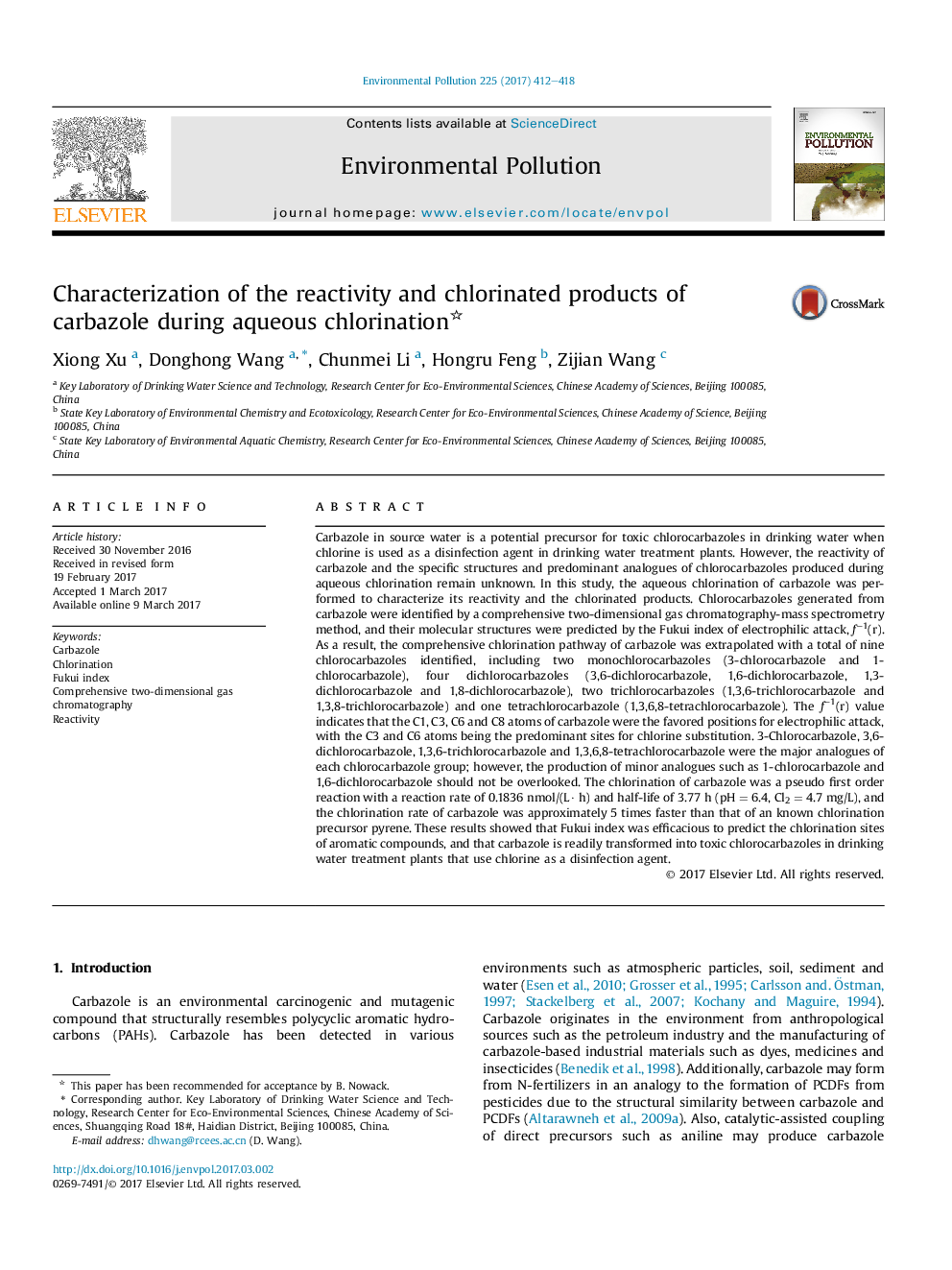| کد مقاله | کد نشریه | سال انتشار | مقاله انگلیسی | نسخه تمام متن |
|---|---|---|---|---|
| 5748948 | 1619148 | 2017 | 7 صفحه PDF | دانلود رایگان |
- Carbazole is readily transformed into toxic chlorocarbazoles.
- Comprehensive chlorination pathway of carbazole is proposed.
- Molecular structures of nine chlorocarbazoles were elucidated.
- Predominant chlorocarbazole analogues were identified.
Carbazole in source water is a potential precursor for toxic chlorocarbazoles in drinking water when chlorine is used as a disinfection agent in drinking water treatment plants. However, the reactivity of carbazole and the specific structures and predominant analogues of chlorocarbazoles produced during aqueous chlorination remain unknown. In this study, the aqueous chlorination of carbazole was performed to characterize its reactivity and the chlorinated products. Chlorocarbazoles generated from carbazole were identified by a comprehensive two-dimensional gas chromatography-mass spectrometry method, and their molecular structures were predicted by the Fukui index of electrophilic attack, fâ1(r). As a result, the comprehensive chlorination pathway of carbazole was extrapolated with a total of nine chlorocarbazoles identified, including two monochlorocarbazoles (3-chlorocarbazole and 1-chlorocarbazole), four dichlorocarbazoles (3,6-dichlorocarbazole, 1,6-dichlorocarbazole, 1,3-dichlorocarbazole and 1,8-dichlorocarbazole), two trichlorocarbazoles (1,3,6-trichlorocarbazole and 1,3,8-trichlorocarbazole) and one tetrachlorocarbazole (1,3,6,8-tetrachlorocarbazole). The fâ1(r) value indicates that the C1, C3, C6 and C8 atoms of carbazole were the favored positions for electrophilic attack, with the C3 and C6 atoms being the predominant sites for chlorine substitution. 3-Chlorocarbazole, 3,6-dichlorocarbazole, 1,3,6-trichlorocarbazole and 1,3,6,8-tetrachlorocarbazole were the major analogues of each chlorocarbazole group; however, the production of minor analogues such as 1-chlorocarbazole and 1,6-dichlorocarbazole should not be overlooked. The chlorination of carbazole was a pseudo first order reaction with a reaction rate of 0.1836 nmol/(L· h) and half-life of 3.77 h (pH = 6.4, Cl2 = 4.7 mg/L), and the chlorination rate of carbazole was approximately 5 times faster than that of an known chlorination precursor pyrene. These results showed that Fukui index was efficacious to predict the chlorination sites of aromatic compounds, and that carbazole is readily transformed into toxic chlorocarbazoles in drinking water treatment plants that use chlorine as a disinfection agent.
178
Journal: Environmental Pollution - Volume 225, June 2017, Pages 412-418
